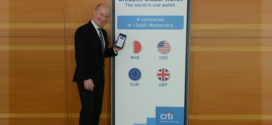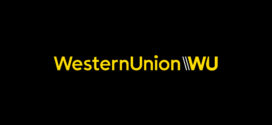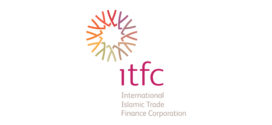 The widespread use of intransparent FX rates is creating an unchallenged source of increased operational costs, while lack of clarity around them obscures such costs. Dieter Stynen, Global Transaction Banking FX, Deutsche Bank, sheds light on how such transparency gaps appear and explores how corporates can minimise FX costs
The widespread use of intransparent FX rates is creating an unchallenged source of increased operational costs, while lack of clarity around them obscures such costs. Dieter Stynen, Global Transaction Banking FX, Deutsche Bank, sheds light on how such transparency gaps appear and explores how corporates can minimise FX costs
As the Middle East aims to improve growth trajectories and become a truly global trade hub, every corporate department in the region plays a greater role in maximising revenues, rationalising business operations and facilitating trade – the vital ingredients that will further raise the Gulf’s economic profile.
Treasury departments are no exception in contributing to these broader goals of revenue maximisation. In light of this, one operational area in particular – FX payments – remains a pain point as the true costs of cross-currency transactions are very often unknown to the treasurer. As a result, these additional and avoidable expenses remain largely unchecked.
However, sophisticated FX solutions are enabling treasurers to control cross-currency payment costs. By demanding better visibility of the rates used for transactions, corporates can also improve the organisation’s bottom line. Due to expanding and shifting trade flows in the Middle East, corporates’ ability to manage FX costs will, in turn, contribute to the successful penetration of new markets.
Treasury pressures: dynamic trade flows and global competition
Of course, any operational changes that facilitate trade ought to be welcomed – now more than ever given the shifting world trade axis. Gulf treasurers are operating in a business landscape where trade flows with Europe are decreasing – replaced with growing flows with Latin American and Asian markets. In fact, 67% of the Gulf Co-operation Council’s (GCC) exports arrive in Asia. In this respect, an increase in counterparties that trade in more volatile currencies has intensified pressure to mitigate FX risks and costs in order to remain competitive.
Indeed, FX risk is just one aspect: in the post-crisis environment, treasurers are not exempt from corporate-wide pressures to achieve more with less. Therefore, treasurers are now considered corporate strategists – capable of accomplishing cost savings and revenue maximisation to keep ahead of the global trend. So, as Middle Eastern corporates continue to make progress in emerging markets, treasurers have become integral to executing cost-competitive trades.[1]
But, while pressure to mitigate currency exposure has increased – along with customer demand for effective FX solutions – a transparency black hole still exists. When issuing such payments, full disclosure of the FX rates and spreads applied by their bank often remain hidden from treasurers’ sights.
When aggregated across an organisation and its subsidiaries, treasurers could be leaving a significant operational risk unchallenged – and some treasurers may be unpleasantly surprised by the net value of these payments, which is negatively impacting the corporate’s bottom line.
Transparency black holes: causes and effects
Certainly, because treasurers are kept in the dark over FX exposure, cost mitigation becomes a near-impossible task. FX blind spots exist because treasurers do not receive enough data around the amounts debited from the corporate’s account, and at what rate, at every stage of the payment flow. While the treasurer will be aware that an FX risk is present, the potential transaction costs are unknown.
Of course, if cross-currency payments are processed using a real-time rate, the treasurer might still feel confident that the corporate’s operations are airtight. However, this is not the case – many banks use fixed FX rates for cross-currency payments. Such rates are typically adjusted perhaps twice per day only. In order to protect against intraday volatility, the bank will use a wide spread, which may significantly differ from the true currency value in the real-time market. Of course, while these buffered rates may still offer competitive rates for harder currencies, this may not be the case in fluctuation-prone markets (such as Latin America).
Indirect cross-currency transaction costs also remain unclear even when making payments using the corporate’s base currency. Consider a Saudi-based corporate paying a Chinese supplier that invoices the corporate in riyal. The payment will be converted into the supplier’s base currency (yuan) by the supplier’s bank – creating an FX cost for the supplier. Typically, the supplier may build this cost into the invoice which, in effect, minimises fixed-rate spreads. Deutsche Bank has found this practice could increase invoice amounts by as much as 3-5%.
Despite the treasury team’s broader objectives of achieving process rationalisation and transparency, many solutions that attempt to mitigate FX costs are fragmented and costly. For instance, opening local currency accounts to pay suppliers is one such solution. This time-consuming practice can leave cash trapped in a web of offshore accounts.
This is problematic both operationally and financially. Operationally, it creates cash liquidity difficulties; for example, should additional cash be needed in other currencies, the treasurer may be forced to move cash from multiple local currency accounts to the target account – also creating a number of FX risks and, therefore, additional indirect transaction costs.
Furthermore, not only will the values in foreign currency accounts fluctuate in value with the intraday currency rate, but for currencies experiencing negative interest rates – such as the Japanese yen and the euro – local currency accounts can generate a tangible expense. Given that certain currency accounts would generate additional operating costs while being used very infrequently, even accounts for hard currencies can be financially unviable.
Converting FX flows in real-time
While operating in a complex financial landscape, treasurers should approach transparency during cross-currency payments as a requirement rather than a luxury. Corporates can adopt one-stop shop solutions, which consolidate cross-currency and domestic payments to stem from the same account, as well as provide rich data reporting of the real-time FX rates applied. This will give full visibility of the payment process and costs to treasury. Shifting away from fixed-rates can give treasurers confidence that their transaction processes are converted at the most competitive rate possible.
In fact, the shift can lead to tangible cost savings. If we return to the example of the Saudi-based corporate, rather than receiving an invoice in riyal from the supplier, this could instead be issued in Chinese yuan. By doing so, the corporate can take greater control of the transaction as the supplier’s bank is no longer tasked with converting the payment. Therefore, cost calculations of FX transactions become more accurate for the buyer, and the FX risk previously passed onto the supplier is removed.
Although the potential for pricing and invoicing in the supplier’s domestic currency will not be instantaneous, treasury can – by involving procurement – leverage the advantages for the supplier to negotiate better price points. In effect, fixed rates create additional transaction costs for payments, which no longer apply. Of course, price certainty for both parties enhances the trade and supply chain relationship by accommodating suppliers more readily – another string to the corporate’s bow in building trade connections. Indeed, transparency can act as a building block for trust between customer and supplier. And any means of facilitating cross-border trade ought to be welcomed.
Of course, leveraging such solutions to achieve wider rationalisation strategies is fully embraced by treasurers. By consolidating all payments from one account, the corporate no longer requires myriad foreign currency accounts and can avoid any regulatory and administrative overheads associated with conducting FX payments using such a set-up. This allows the treasurer to contribute towards achieving the broader objectives of maximising efficiencies across the business.
Indeed, cumbersome treasury methods for mitigating FX costs have offered only partial solutions because domestic and cross-currency payments have been treated in silos for too long. In order to encourage treasurers to view FX transaction costs as avoidable, full visibility is a necessity.
Despite the far-reaching advantages an FX payments transformation can offer, it is unsurprising that widespread adoption has been slow, given that the implications of fixed rates are currently out of sight for many. However, treasurers can now harness FX rate transparency as a gateway to wider strategy improvements such as improving price competitiveness as well as trade relationships. And, by reducing corporate-supplier friction, this offers an attractive opportunity for Middle Eastern corporates to facilitate trade flows to the region.
[1]https://www.treasurers.org/bountiful-south http://www.economistinsights.com/sites/default/files/GCC%20Trade%20and%20investment%20flows.pdf
 Cash And Trade Magazine For Cash and Trade professionals in the Middle East
Cash And Trade Magazine For Cash and Trade professionals in the Middle East




